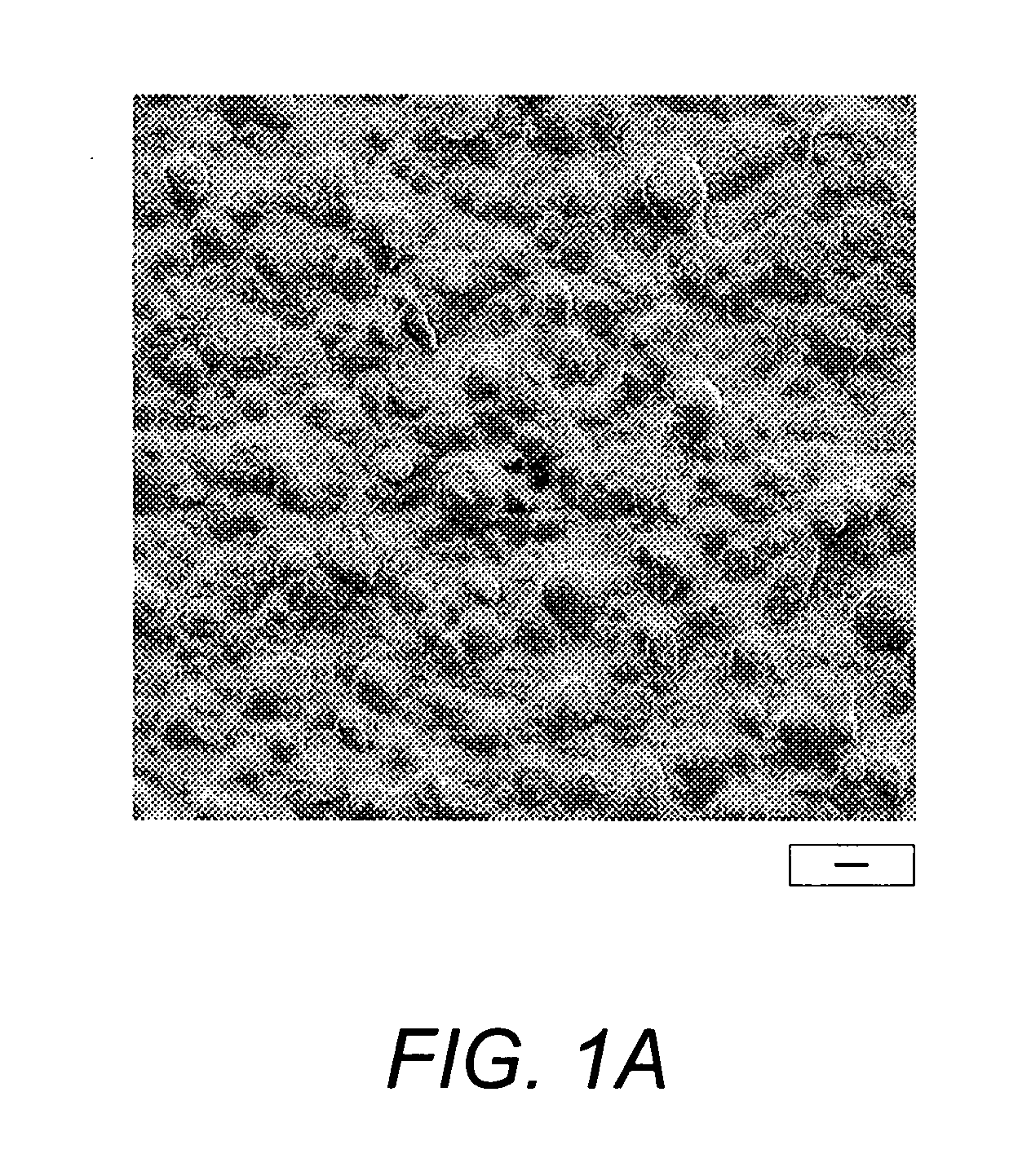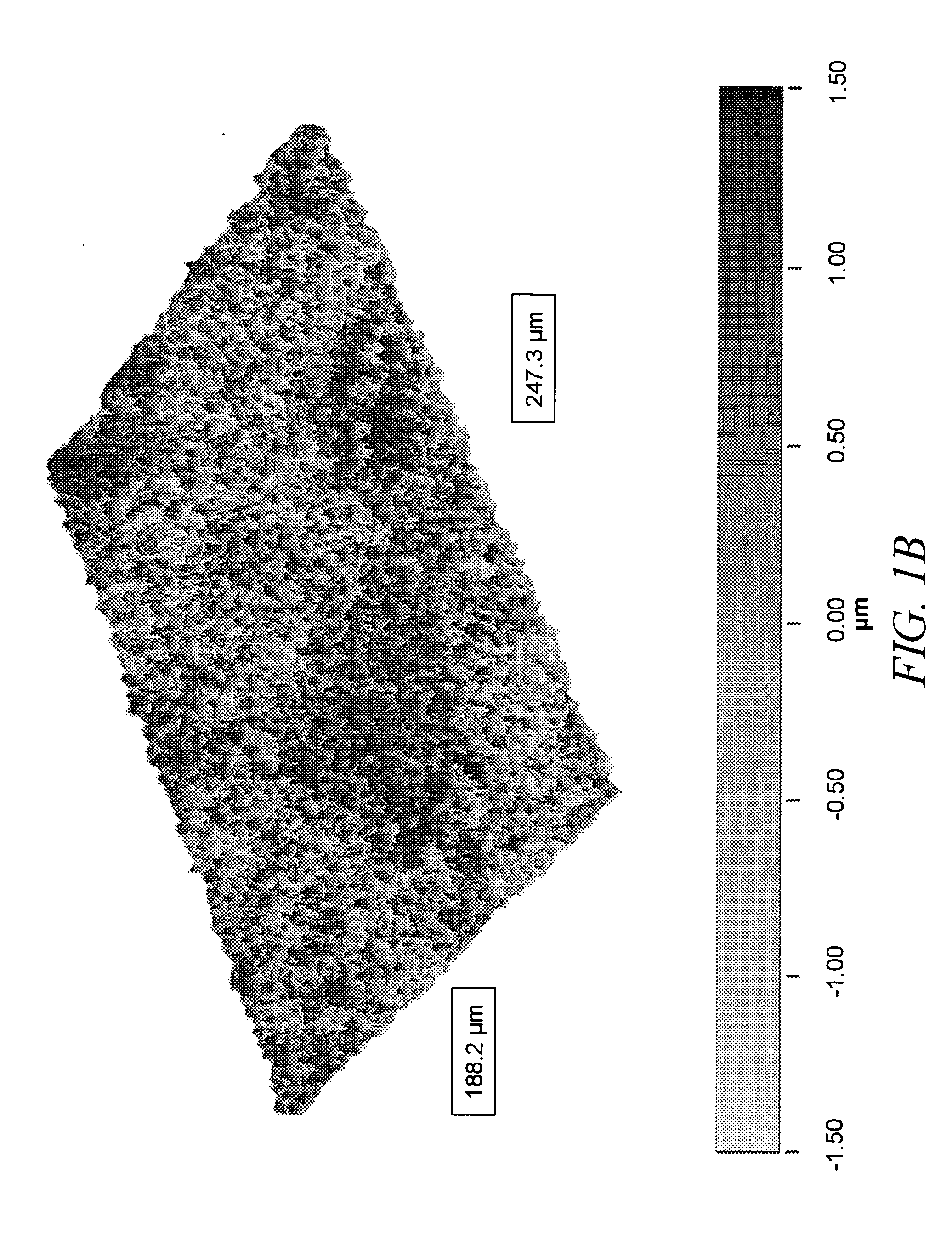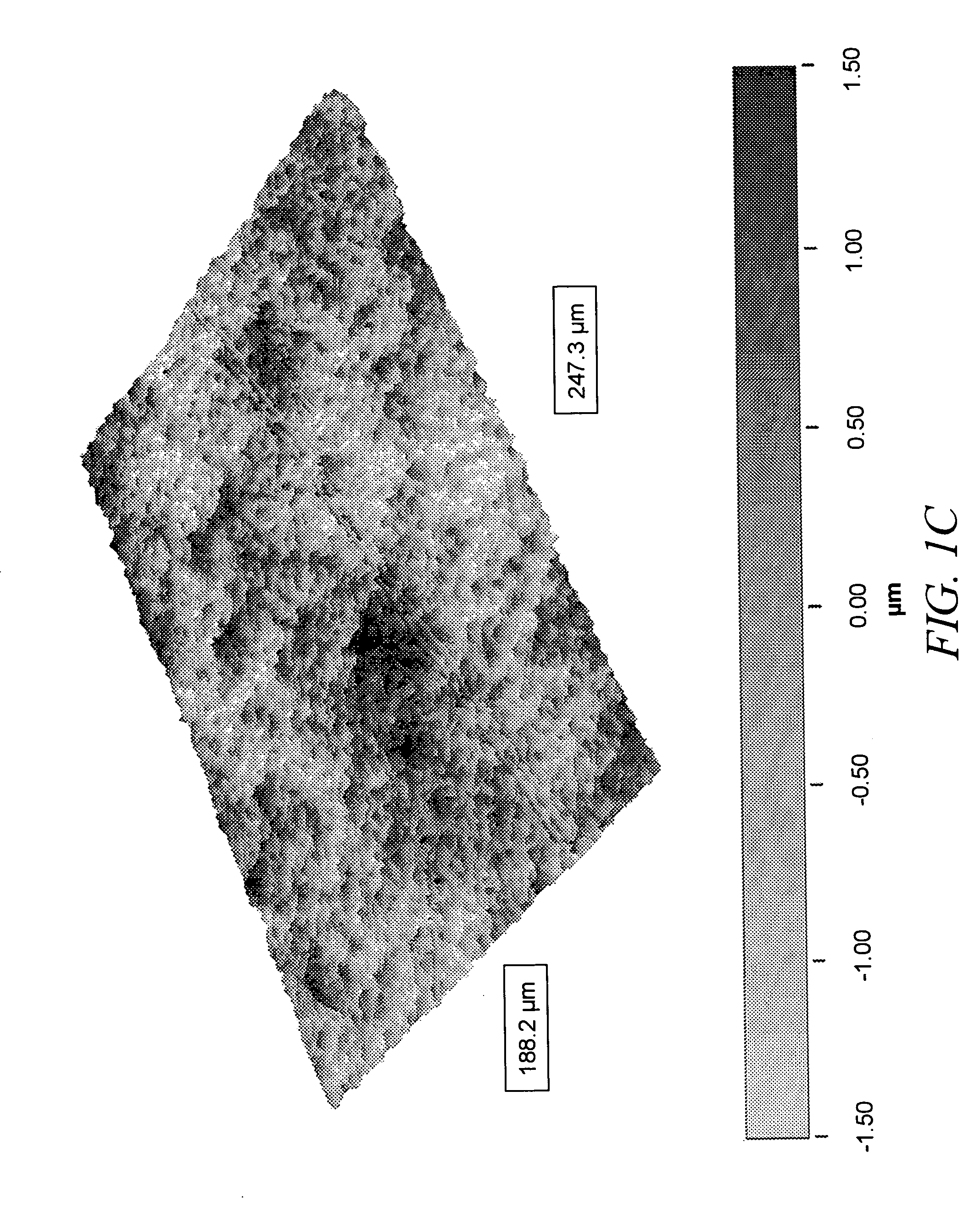Water dispersible film
a technology of water dispersible film and film, which is applied in the direction of biocide, antibacterial agents, drug compositions, etc., can solve the problems of limiting their use as microbicides in developing countries, adding to cost and generating disposal problems,
- Summary
- Abstract
- Description
- Claims
- Application Information
AI Technical Summary
Benefits of technology
Problems solved by technology
Method used
Image
Examples
example 1
on and Physical Properties of CAP-HPC Film
[0061] CAP, HPC (150-400 cps, NF, Spectrum, New Brunswick, N.J., USA), HPC (4,000-6,500 cps, NF, Spectrum) and glycerol were dissolved in acetone-ethanol (EtOH) 4:6 at final concentrations of 2, 1, 1, and 1% (w / w), respectively. The viscous liquids were poured into Teflon® coated steel or aluminum foil dishes (0.425 g / cm2) which were subsequently maintained for 16 hours at 40° C. followed by 1 hour in a vacuum oven at 50° C. to dry the films.
[0062] To measure the kinetics of film conversion into a cream, the film was shredded into ≈1 mm2 pieces in a Guardian Cross-Cut Shredder (Quartet GBC, Skokie, Ill., USA) and added at 75 mg / ml to either water or human seminal fluid (New England Immunology Associates, Cambridge, Mass., USA). The viscosity was measured in a DV-3 P R digital viscometer (Anton Paar GmbH, Graz, Austria) using a TR-8 spindle at speeds decreasing from 200 to 2 r.p.m.
[0063] Imaging of cast films was performed with a JEOL 6500 ...
example 2
nts of Infectivity of HIV-1 and Herpesviruses (HSV)
[0066] To measure HIV-1 infectivity, virus was precipitated from tissue culture media containing 10% fetal bovine serum with polyethylene glycol 8000 (final concentration 10 mg / ml). The pellet containing virus was dissolved in 225 μl aliquots of 0.14 M NaCl, 0.01 M Tris(hydroxymethyl)aminomethane, pH 7.2 (TS). The aliquots were pre-warmed to 37° C. and precut pieces of a film “H” were added. After 5 minutes at 37° C., 1.225 ml of tissue culture medium were added and the mixtures were centrifuged for 1 hour at 14,000 r.p.m. in an Eppendorf 54156 microfuge (Brinkmann Instruments, Inc., Westbury, N.Y., USA) to pellet the virus. The virus was redissolved, serially diluted twofold (2× to 2,048×), and the dilutions tested for infectivity using HeLa-CD4-LTR-β-gal and MAGI-CCR5 cells obtained from the AIDS Reagent and Reference Reagent Program (Rockville, Md., USA) for HIV-1 IIIB and HIV-1 BaL, respectively.
[0067] Virus replication was qua...
example 3
ion of Non-Viral STD Pathogens and Bacteria Associated with Bacterial Vaginosis (BV)
[0069] The bacterial strains and the corresponding growth media were obtained from the American Type Culture Collection (ATCC, Manassas, Va., USA) and were the same as described in Neurath et al., Biologicals, (1999), 27, 1, 11-21 and Neurath et al., J. Antimicrob. Chemother., (2000), 45, 713-714). The Mycoplasma capricolum that was used was ATCC # 23205. Graded quantities of film H (0 to 150 mg / ml) were added to suspensions of the respective bacteria (8×108 to 1×109 / ml in TS) pre-warmed to 37° C. After 5 minutes at 37° C., the suspensions were diluted 10-fold in the appropriate growth medium, centrifuged to pellet the bacteria which were then resuspended in the original volume of growth medium. Serial 10-fold dilutions in the appropriate growth media were made, and after incubation at 37° C. (30° C. for Haemophilus ducreyi) for 20 hours to 5 days, depending on the bacterial strain, turbidity was mea...
PUM
| Property | Measurement | Unit |
|---|---|---|
| weight % | aaaaa | aaaaa |
| weight % | aaaaa | aaaaa |
| weight % | aaaaa | aaaaa |
Abstract
Description
Claims
Application Information
 Login to View More
Login to View More - R&D
- Intellectual Property
- Life Sciences
- Materials
- Tech Scout
- Unparalleled Data Quality
- Higher Quality Content
- 60% Fewer Hallucinations
Browse by: Latest US Patents, China's latest patents, Technical Efficacy Thesaurus, Application Domain, Technology Topic, Popular Technical Reports.
© 2025 PatSnap. All rights reserved.Legal|Privacy policy|Modern Slavery Act Transparency Statement|Sitemap|About US| Contact US: help@patsnap.com



